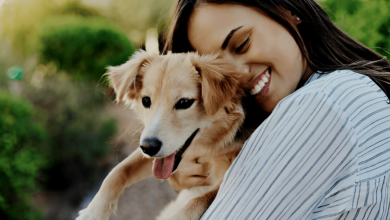
How to Recognise Signs of Stress in Cats & Dogs
Signs of stress in cats and dogs: Learn how to identify and alleviate stress in your pets for a happier, healthier companion.
Stressed in cats and dogs is a common yet often overlooked issue that can significantly impact their overall well-being. As pet owners, understanding how to recognise signs ofin our furry companions is crucial for ensuring their physical and emotional health. Stress in pets can manifest in various ways, from subtle behavioral changes to more obvious physical symptoms. By learning to identify these signs early, we can take proactive steps to address the underlying causes and provide a more comfortable and supportive environment for our pets. This article will delve into the key indicators in cats and dogs, explore the potential causes, and offer practical solutions to help alleviate their anxiety.
Recognising in cats and dogs requires a keen eye and a deep understanding of their natural behaviors and body language. While some signs of may be easy to spot, others can be more nuanced and easily mistaken for other issues. By paying close attention to changes in their behavior, appetite, and physical condition, we can better interpret what our pets are trying to communicate. This article aims to equip pet owners with the knowledge and tools needed to identify and address in their pets, ultimately fostering a happier and healthier life for their beloved companions.
Understanding Stress in Cats and Dogs
Stress is a natural response to perceived threats or changes in the environment, and it affects both cats and dogs in similar ways. However, the way they express can differ significantly due to their unique instincts and behaviors. For cats, often stems from changes in their environment, such as moving to a new home, the introduction of a new pet, or even rearranging furniture. Dogs, on the other hand, may experience due to separation anxiety, loud noises like thunderstorms or fireworks, or changes in their daily routine.
In cats, can manifest through changes in grooming habits, such as excessive licking or neglecting their coat altogether. They may also exhibit changes in litter box behavior, such as urinating outside the box or avoiding it entirely. Other signs include hiding more often, becoming unusually aggressive, or displaying a lack of appetite. Cats are masters at masking discomfort, so it’s important to pay close attention to even the smallest changes in their behavior.
Dogs, being more social animals, may show stressed through behaviors like excessive barking, whining, or pacing. They may also exhibit destructive behaviors, such as chewing on furniture or digging holes in the yard. Physical symptoms like panting, drooling, or trembling can also indicate in dogs. Additionally, changes in appetite, sleep patterns, or energy levels can be red flags that something is amiss.
Common Causes of Stress in Pets
Understanding the root causes in cats and dogs is essential for addressing the issue effectively. For cats, common stressors include changes in their environment, such as moving to a new home, the introduction of a new pet or family member, or even changes in their daily routine. Cats are creatures of habit, and any disruption to their established routine can trigger . Additionally, conflicts with other pets, lack of mental stimulation, or even health issues can contribute to their anxiety.
For dogs, separation anxiety is one of the most common causes . Dogs are pack animals and thrive on companionship, so being left alone for extended periods can be distressing for them. Other stressors include loud noises like thunderstorms or fireworks, changes in their living situation, or even visits to the vet. Dogs are also highly attuned to their owner’s emotions, so if you’re feeling anxious, your dog may pick up on that and become stressed as well.
How to Recognise Signs of Stress
Recognising signs in cats and dogs requires a combination of observation and understanding their normal behavior. For cats, look for changes in their body language, such as flattened ears, a puffed-up tail, or dilated pupils. They may also exhibit changes in their vocalizations, such as excessive meowing or growling. Additionally, pay attention to their eating and grooming habits, as these can be key indicators of stress.
In dogs, stressed can be identified through changes in their behavior, such as increased aggression, restlessness, or withdrawal. Physical symptoms like excessive panting, drooling, or trembling can also be signs of stress. Additionally, dogs may exhibit changes in their appetite, sleep patterns, or energy levels. It’s important to note that some signs of stress, such as excessive barking or destructive behavior, can also be symptoms of other issues, so it’s crucial to consider the context and look for multiple signs before concluding that your dog.
Practical Solutions to Alleviate Stress
Once you’ve identified that your cat or dog is stressed, the next step is to take action to alleviate their anxiety. For cats, creating a safe and comfortable environment is key. This can include providing plenty of hiding spots, vertical spaces like cat trees, and ensuring they have access to their favorite toys and scratching posts. Additionally, maintaining a consistent routine and minimizing changes in their environment can help reduce stressed.
For dogs, addressing separation anxiety may require gradual desensitization to being alone. This can involve leaving them alone for short periods and gradually increasing the duration over time. Providing plenty of physical and mental stimulation, such as daily walks, puzzle toys, and training sessions, can also help reduce stress. Additionally, creating a calm and quiet space where your dog can retreat during stressful situations, like thunderstorms or fireworks, can be beneficial.
When to Seek Professional Help
While many cases in cats and dogs can be managed at home, there are times when professional help may be necessary. If your pet’s stress is severe or persistent, it’s important to consult with a veterinarian or a certified animal behaviorist. They can help identify any underlying health issues that may be contributing to the provide tailored solutions to address the problem. In some cases, medication or specialized behavior modification techniques may be recommended.
Read More: How to Stop Your Dog from Pulling on the Lead
Conclusion
Recognising and addressing stress in cats and dogs is an essential part of being a responsible pet owner. By understanding the signs of and taking proactive steps to alleviate it, we can ensure that our furry companions lead happy, healthy, and fulfilling lives. Whether it’s creating a safe and comfortable environment, maintaining a consistent routine, or seeking professional help when needed, there are many ways to support our pets through stressful times.
Ultimately, the bond we share with our pets is built on trust, love, and understanding. By paying close attention to their needs and responding to their stress with compassion and care, we can strengthen that bond and provide them with the best possible quality of life. Remember, a happy pet is a healthy pet, and taking the time to address their stress is one of the most important things we can do as pet owners.
FAQs
What are the most common signs of stress in cats?
Common signs of stress in cats include changes in grooming habits, litter box behavior, hiding, aggression, and loss of appetite.
How can I tell if my dog is stressed?
Signs in dogs include excessive barking, pacing, destructive behavior, panting, trembling, and changes in appetite or sleep patterns.
What causes stress in cats and dogs?
Stress in cats and dogs can be caused by changes in their environment, separation anxiety, loud noises, conflicts with other pets, or health issues.
How can I help my pet cope with stress?
Providing a safe and comfortable environment, maintaining a consistent routine, and offering plenty of physical and mental stimulation can help alleviate stress in pets.
When should I seek professional help for my pet’s ?
If your pet’s is severe, persistent, or accompanied by other concerning symptoms, it’s important to consult with a veterinarian or animal behaviorist for professional guidance.







